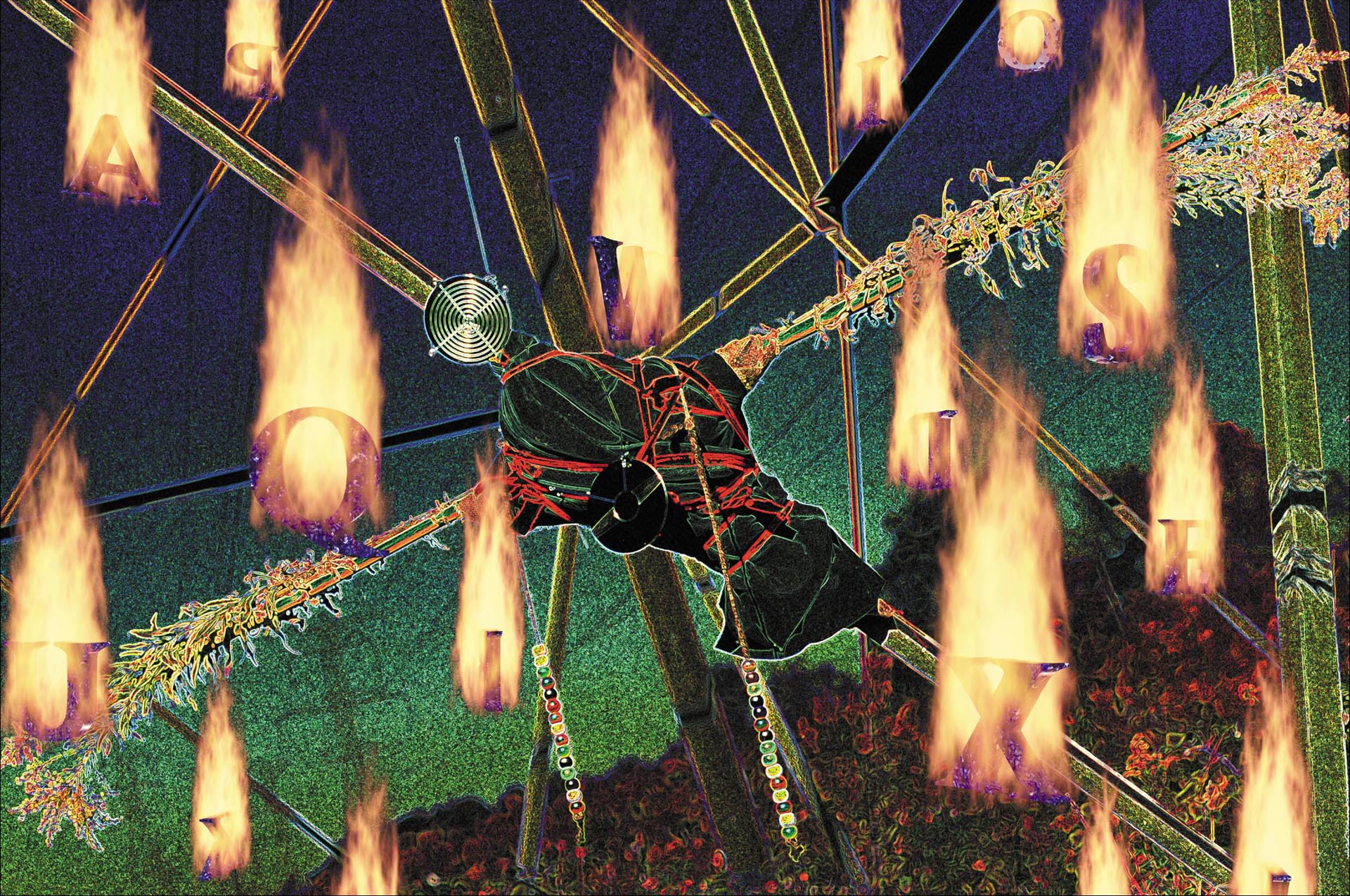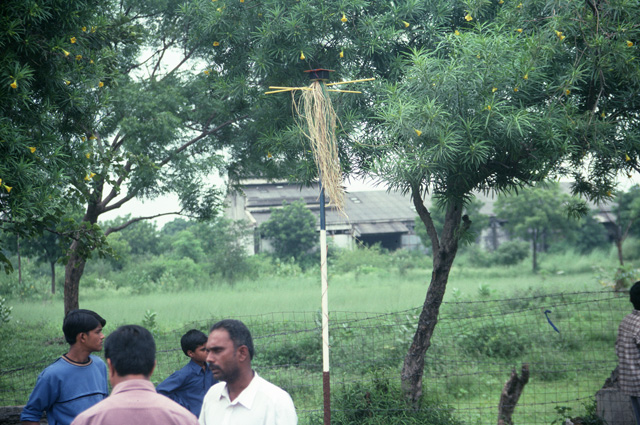Quantum Dance Works
CONTACT
PAGES
HOME
PAGES
Quantum Dance Works

Dennis Summers
Since the mid 1980s Dennis Summers has shown artwork throughout the US and abroad. He has done small wall pieces and sculptures, but for many years mainly concentrated on large scale mixed- and multi-media installation work with occasional performance components. He wrote about this work for the Leonardo Journal in the Fall of 1996 ("Presenting Scientific Concepts with Methods and Forms from Primal Cultures: Mixed Media and Installation Artworks"). Quantum Dance Works was the original studio name for this body of work. More recently, his time has been split between three very different projects. For more on the current studio work go to Strategic Technologies for Art, Globe and Environment.

The Crying Post Project
In 2001 Summers began the global memorial artwork The Crying Post Project with multimedia markers placed at sites of environmental disasters (ten thus far), ranging from the Alaska to Bhopal. One of the most rewarding aspects of this project have come from the people he has met and worked with across the globe. In addition to the posts themselves, a series of digital prints have been created (one was included in an exhibition in Beijing during the Olympics) and an interactive 3D website. He wrote about this project for the Leonardo Journal in the Fall of 2003 ("The Crying Post Project: A Multi-Part, Multi-Media Artwork to Memorialize Global Sites of Pain.") In 2019, poet Janine DeBaise wrote an article about it called "Cure for Pain," for Orion Magazine.
Phase Shift & Interference Videos
In stark contrast to this somewhat conceptual project, in 2005 Summers began a series of CG color field videos called the Phase Shift Video Series. Inspired by the music of Steve Reich they consist of complex visual patterns that change by going in and out of phase over time. Visually beautiful they are also quietly meditative. One critic described them as a "pathway to nirvana. They have been exhibited widely, including in Russia, Mexico, and Brazil. One of them was a purchase prize winner at La Bienal Internacional de Arte Contemporáneo in Almería, Spain in 2006. The newer Interference Series begun several years later, is somewhat different, inspired in this case by Alvin Lucier. One of them was notably commissioned in 2017 as the inaugural artwork for a giant outdoor display screen in Detroit, MI.
Slow Light Shadow Matter
Slow Light Shadow Matter begun in 2012 is a long-term project comprised of 13 short computer generated animated videos. Three have been completed so far. The imagery in SLSM consists of complex motion collages, combining modified representational and non-representational elements, text, music, and voice. Each chapter is inspired by an artist-scientist pair who were approximate contemporaries. The chapters are held together by multiple themes. For example, one narrative thread comes from the Greek god Hermes. Each video chapter includes many of the same elements in different styles and from different perspectives - variations on a theme. In addition to a free-improv soundtrack created by internationally known composer and musician Thollem Electric, there is a voice-over recounting a biography based on jazz saxophonist Ornette Coleman.
Copyright © 2022 Strategic Technologies for Art, Globe and Environment


_640.jpg)
